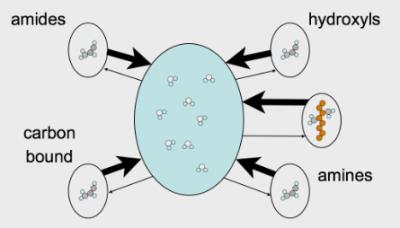CEST, Basic Principles, Contributions To Z-Spectrum
1Vanderbilt University Institute of Imaging Science
Synopsis
The purpose of this lecture is to introduce the ideas underlying 1) exchange effects in MRI, and CEST in particular; 2) the contributions to CEST contrast; 3) CEST comparisons to spectroscopy; and 4) current issues in CEST research related to pulse sequence design, imaging metrics, and solute specificity.
Most MRI contrast is generated by exchange phenomenon. While relaxation theory is typically taught using the ideas of Bloembergen, Purcell, and Pound (BPP) and focusing on the effects of molecular motion, it is magnetization exchange that is often the essential contributor to relaxation effects in vivo, especially at higher field strengths. In this sense, simple T1- and T2-weighted imaging are measures of magnetization exchange. However, these commonly applied imaging methods generate non-specific contrast, since many distinct exchanging and non-exchanging phenomenon contribute. Magnetization transfer (MT) was developed as a means for imaging a more specific biophysical phenomenon: exchange between water and macromolecules. MT in turn led to chemical exchange saturation transfer (CEST), a means for generating contrast based on magnetization exchange with particular sites, as illustrated in the figure, which reside on particular molecules.
Like spectroscopy, CEST gives information on metabolic concentrations. However, while spectroscopy directly images the metabolite proton signal, CEST is an indirect measure, reporting on changes in the water signal due to exchange between water and a metabolite. This direct/indirect difference results in distinct characteristics: spectroscopy works on most in vivo molecules, generates narrow peaks, and has a small signal strength; CEST works only on molecules with amendable exchange rates and frequency offsets, generates broad peaks that are blurred by rf irradiation and exchange, and has a relatively large signal. Most fundamentally, magnetization exchange is detrimental to spectroscopy and essential to CEST.
There are five key interrelated issues prevalent in current CEST research: irradiation methods, imaging metrics, solute specificity and quantitative characterization, analytic approximations, and applications. CEST methods irradiate the solute resonance, and the simplest CEST pulse sequence employs continuous wave irradiation. However, pulsed irradiation is often used in practice, either due to amplifier constraints or to generate unique and informative contrast. For example, pulsed methods have been employed to filter the signal on the basis of the exchange rate, avoid macromolecular contributions, or to isolate exchange contributions to the signal while avoiding assumptions about the solute frequency distribution. For each of these irradiation methods, there are corresponding metrics, designed to maximize solute specificity or to quantify a particular tissue parameter. This method/metric design is typically informed by an analytic signal approximation expressed in terms of the underlying tissue parameters. And this entire combination of method, metric, specificity, and analytic approximation is in the service of a particular application, targeting a particular solute, frequency offset, and exchange rate. In this talk, we will briefly touch on these issues to lay the groundwork for the rest of the session.
